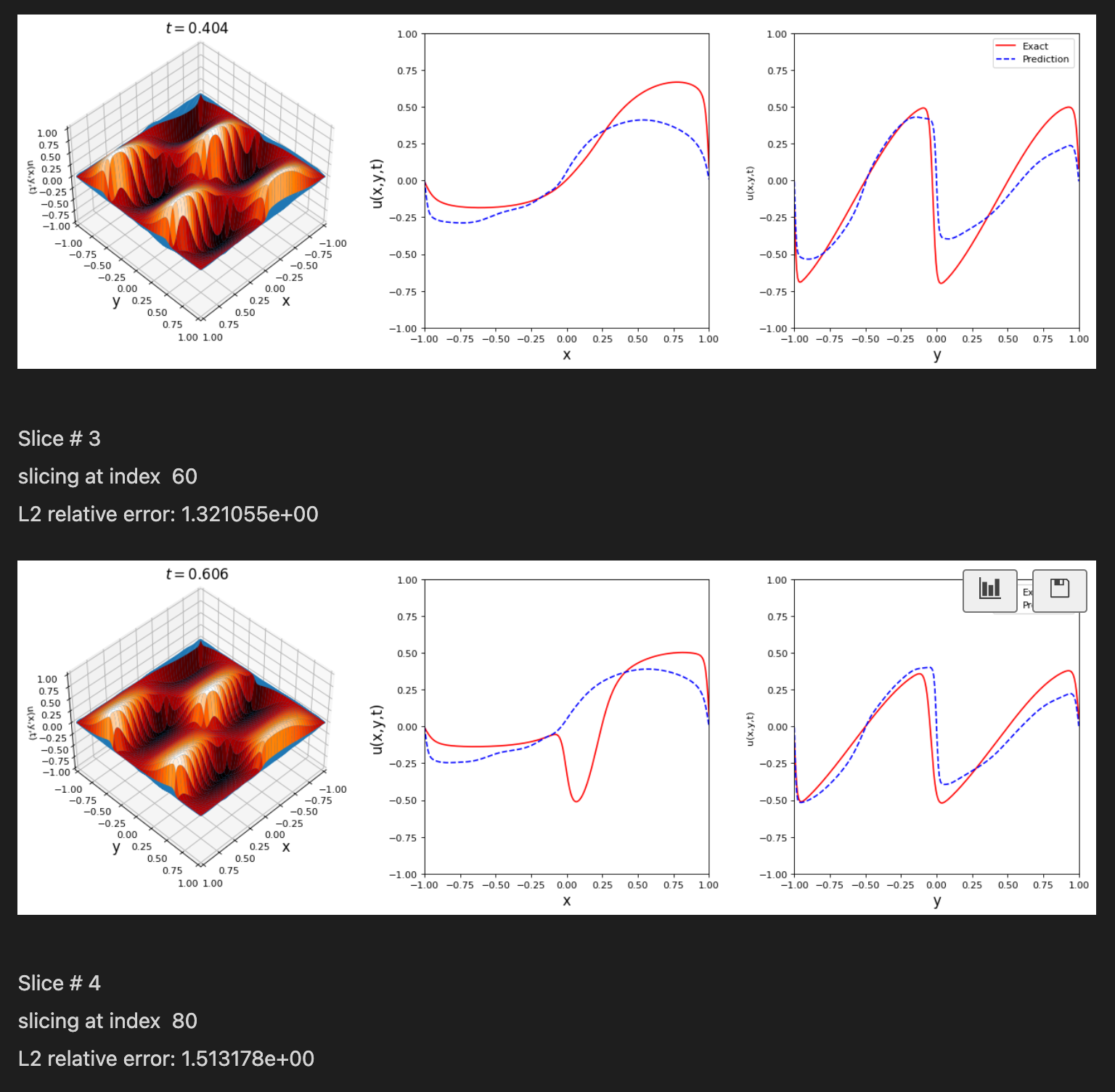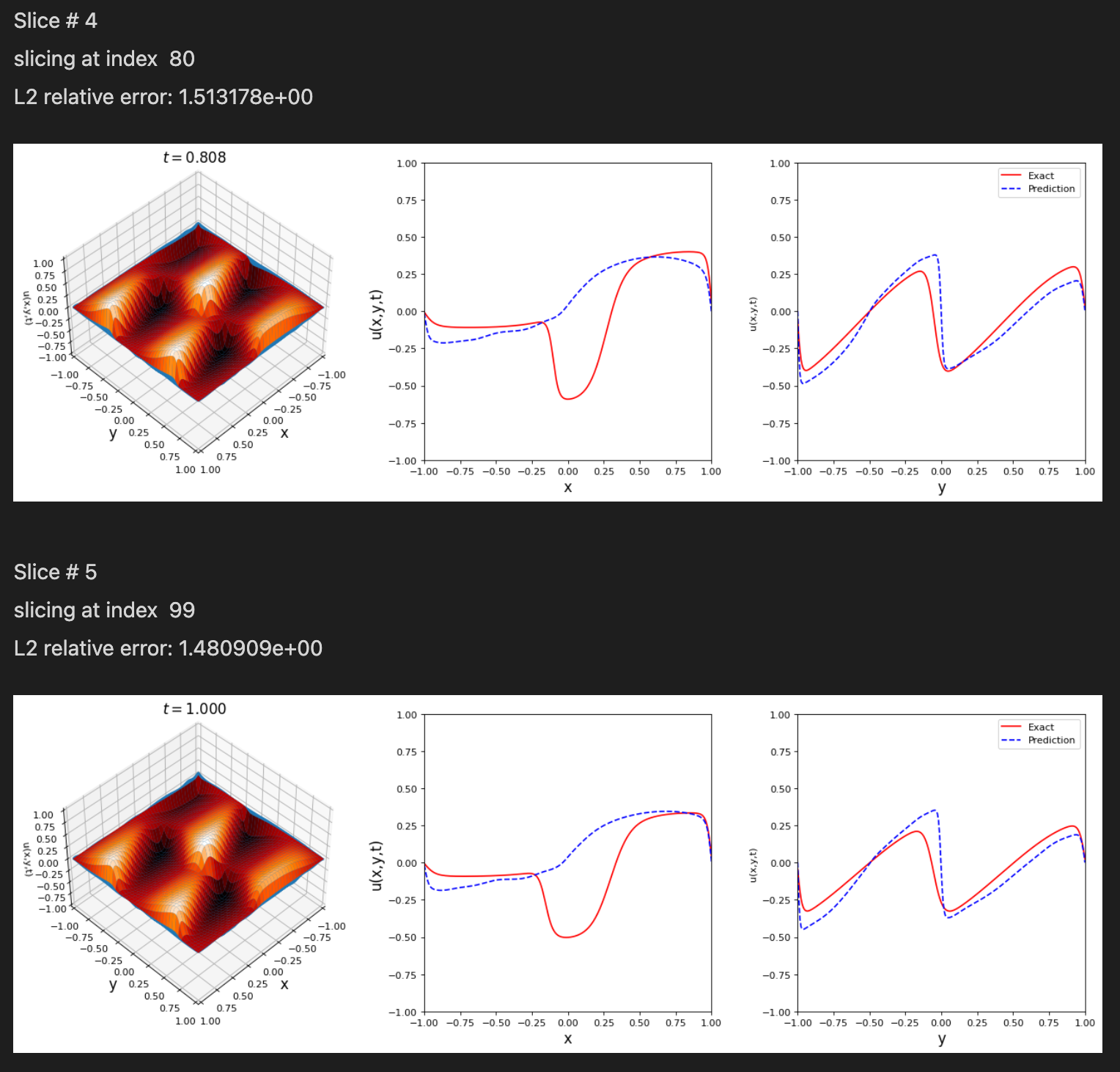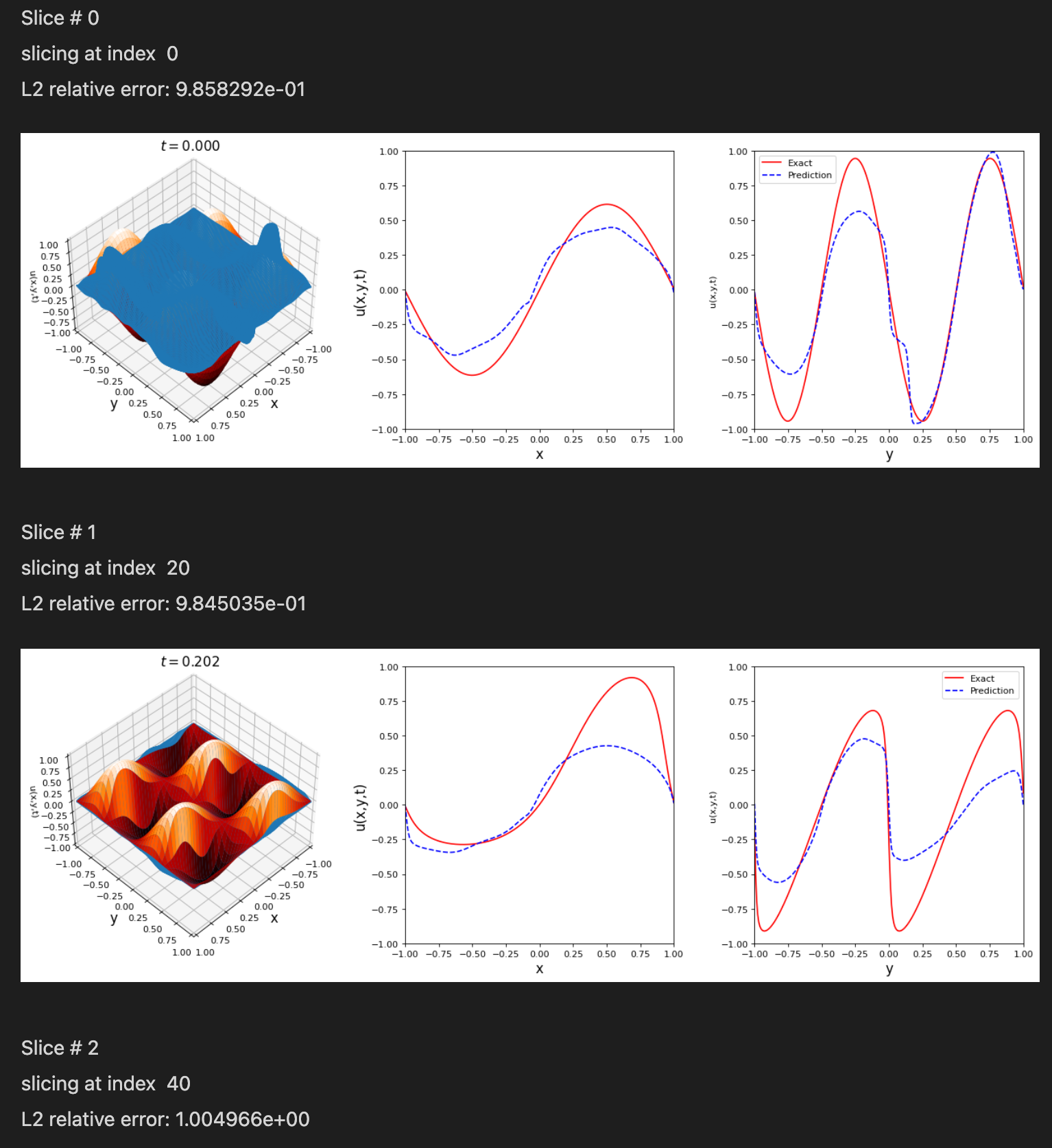TensorDiffEq
 TensorDiffEq copied to clipboard
TensorDiffEq copied to clipboard
2D Burgers Equation
Hello @levimcclenny and thanks for recommending this library!
I have modified the 1D burger example to be in 2D, but I did not get good comparison results. Any suggestions?
import math
import scipy.io
import tensordiffeq as tdq
from tensordiffeq.boundaries import *
from tensordiffeq.models import CollocationSolverND
Domain = DomainND(["x", "y", "t"], time_var='t')
Domain.add("x", [-1.0, 1.0], 256)
Domain.add("y", [-1.0, 1.0], 256)
Domain.add("t", [0.0, 1.0], 100)
N_f = 10000
Domain.generate_collocation_points(N_f)
def func_ic(x,y):
p =2
q =1
return np.sin (p * math.pi * x) * np.sin(q * math.pi * y)
init = IC(Domain, [func_ic], var=[['x','y']])
upper_x = dirichletBC(Domain, val=0.0, var='x', target="upper")
lower_x = dirichletBC(Domain, val=0.0, var='x', target="lower")
upper_y = dirichletBC(Domain, val=0.0, var='y', target="upper")
lower_y = dirichletBC(Domain, val=0.0, var='y', target="lower")
BCs = [init, upper_x, lower_x, upper_y, lower_y]
def f_model(u_model, x, y, t):
u = u_model(tf.concat([x, y, t], 1))
u_x = tf.gradients(u, x)
u_xx = tf.gradients(u_x, x)
u_y = tf.gradients(u, y)
u_yy = tf.gradients(u_y, y)
u_t = tf.gradients(u, t)
f_u = u_t + u * (u_x + u_y) - (0.01 / tf.constant(math.pi)) * (u_xx+u_yy)
return f_u
layer_sizes = [3, 20, 20, 20, 20, 20, 20, 20, 20, 1]
model = CollocationSolverND()
model.compile(layer_sizes, f_model, Domain, BCs)
# to reproduce results from Raissi and the SA-PINNs paper, train for 10k newton and 10k adam
model.fit(tf_iter=10000, newton_iter=10000)
model.save("burger2D_Training_Model")
#model.load("burger2D_Training_Model")
#######################################################
#################### PLOTTING #########################
#######################################################
data = np.load('py-pde_2D_burger_data.npz')
Exact = data['u_output']
Exact_u = np.real(Exact)
x = Domain.domaindict[0]['xlinspace']
y = Domain.domaindict[1]['ylinspace']
t = Domain.domaindict[2]["tlinspace"]
X, Y, T = np.meshgrid(x, y, t)
X_star = np.hstack((X.flatten()[:, None], Y.flatten()[:, None], T.flatten()[:, None]))
u_star = Exact_u.T.flatten()[:, None]
u_pred, f_u_pred = model.predict(X_star)
error_u = tdq.helpers.find_L2_error(u_pred, u_star)
print('Error u: %e' % (error_u))
lb = np.array([-1.0, -1.0, 0.0])
ub = np.array([1.0, 1.0, 1])
tdq.plotting.plot_solution_domain2D(model, [x, y, t], ub=ub, lb=lb, Exact_u=Exact_u.T)



@engsbk I may try training for a little longer and adding the SA weighting scheme. 10k isn't too long of a training horizon, especially for a 2D problem. I would bump more Adam iterations and see where that takes you.
@engsbk Did you train this one for longer? I really think that with more training iterations you'll get pretty good results here.
Yes, I increased Adam epochs to 40,000. The results got better only on the first slice of time.


I was also trying to apply SA here, but when turning isAdaptive to true and using
dict_adaptive = {"residual": [True],
"BCs": [True, False, False, False, False]}
init_weights = {"residual": [tf.random.uniform([N_f, 1])],
"BCs": [100 * tf.random.uniform([1,1,1,1,1]) , None]}
The loss in Adam training kept increasing which eventually showed loss = nan and I could not plot.
Any ideas?